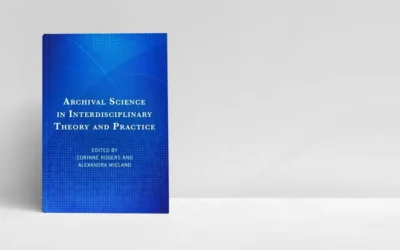How A CMS Improves and Automates Archival Labor
Margot Note
Collections management systems (CMS) should have intuitive user interfaces and easily customizable workflows to accelerate collection information capture, organization, and sharing.
Robust systems are designed to help archivists accession, catalog, and manage holdings without re-keying information or duplicating effort. For example, information entered in an accessions module can be copied into a cataloging module, then applied to an EAD finding aid.
A System Created for Archivists
Using an archival CMS, archivists focus on capturing accession data and transferring it into collection records, using standards-compliant description areas, building and reorganizing hierarchies, and generating finding aids. A CMS created specifically for archival work enables archivists to describe and manage collections as they prefer, rather than settling for systems meant for other organization types.
One way that a CMS supports efficiency for archivists is with research. Archivists can track their work on behalf of users, such as retrieving materials, photocopying items, and on-the-fly digitizing. Archivists can easily log a request, generate a pull slip, and use batch operations to mark pulled, returned, or reshelved materials. In addition, archivists can use statistical and management reports to substantiate their efforts and monitor the work of others.
Although legacy systems usually include a standard set of reporting tools, newer, more powerful archival collections management systems can often provide more advanced capabilities for collection analysis and assessment. They can provide evaluations of the repository’s collections internally and provide broader data to examine from external use.
Applying Standards, Models and Methods to Collections
Collections management systems comply with archival format standards, such as Encoded Archival Description (EAD), Machine-Readable Cataloging (MARC), and content standards, including; Describing Archives: A Content Standard (DACS), Rules for Archival Description (RAD), or General International Standard Archival Description (ISAD (G)). If an organization wants additional field types that fall outside of a standard’s scope in order to track unique information about their collections, the vendor can configure the system to add this information as a facet. Doing so allows the system to harness this data for more refined searches.
Archival systems provide flexible support within a full hierarchical model, from the collection to series, boxes, and items. Depending on the institution’s methods and collections, archivists can use as much or as little of the hierarchy as necessary to provide a suitable description level. If archivists need to rearrange hierarchies in the future, the CMS has the tools to do so. Rearranging hierarchies using less than ideal systems typically require archivists to manually fix each record to reflect this change. However, with a robust CMS, archivists can quickly reorganize collections, series, and subseries, saving hours of work.
Another labor-saving method is integration. Rather than entering data in multiple places, archivists can enter the data once and generate multiple outputs, such as an accession list, an EAD finding aid, a MARC record, a shelf list, and an online exhibit. The ideal approach to processing is having archivists enter data only once; the more they must manipulate data, the more time is wasted. Software should also support importing legacy data. Many archival organizations have invested a great deal of effort in creating finding aids. They want software that will seamlessly import existing data, which can be a challenge, given the variability of archival data forms. Conversely, systems should also enable the easy exporting of data. Archivists recognize the need to export data quickly and want software that can preserve information in a format that can migrate as needed.
Streamlining Processes
Archival processing has always been highly labor-intensive, frequently involving extensive arrangement and description. A CMS can help restructure archives processing and integrate the management of unique digital content and standards-based record creation into the materials-processing workflow. Using an efficient system allows archivists to focus on the deep intellectual work of processing. The CMS can then support a flexible, sustainable, and scalable model for processing the unique materials to promote the awareness and use of valuable historical collections.
Margot Note
Margot Note, archivist, consultant, and Lucidea Press author is a regular blogger, and popular webinar presenter for Lucidea, provider of ArchivEra, archival collections management software for today’s challenges and tomorrow’s opportunities. Read more of Margot’s posts here.
Never miss another post. Subscribe today!
Similar Posts
Ensuring Long-Term Access to Digital Archives
Long-term preservation is essential to ensure digital archives remain accessible and usable.
5 Best Practices for Personal Digital Archiving
Archivists have developed best practices for organizing and maintaining personal digital archives, safeguarding digital legacies for future generations.
Interview with the Editors: Wieland and Rogers on Interdisciplinary Archival Science
Alexandra Wieland and Corinne Rogers co-edited Archival Science in Interdisciplinary Theory and Practice. My interview with them is below.
The Importance of Personal Digital Archiving (Plus Steps to Get Started)
Archivists often help individuals manage and preserve digital files of personal significance.




Leave a Comment
Comments are reviewed and must adhere to our comments policy.
0 Comments